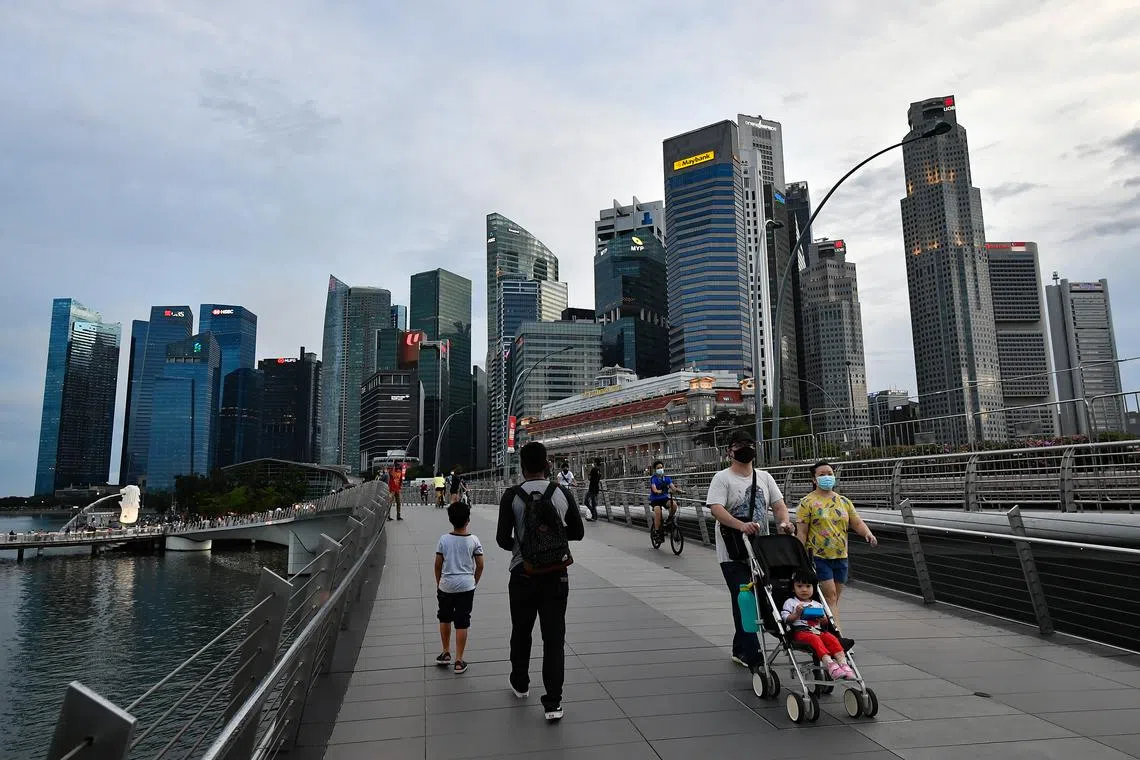Young Singaporeans call for action ahead of COP27 climate summit
Sign up now: Get ST's newsletters delivered to your inbox

One key recommendation is for Singapore to have a higher carbon tax.
ST FILE PHOTO
Follow topic:
SINGAPORE - Young people in Singapore are calling for a higher carbon tax, more transparency on the Republic’s net-zero pathway,
These are among 26 recommendations in a policy paper that was released on Tuesday to advance environmental action in Singapore.
The Green SG Policy Paper builds on a public statement in 2021 – An Urgent Call From Singaporean Youths On The Environmental Crisis – which offered 18 policy recommendations for environmental action.
“This year, we decided to build on that work and expand the list of recommendations, taking into account progress that various stakeholders – including the Singapore Government – have made in the past year,” said the authors.
Close to 50 young people contributed to the paper, of whom 26 were named, including climate activist and artist Dorcas Tang, and Singapore Youth for Climate Action members Rishika Selvan, Swati Mandloi and Terese Teoh.
The other contributors chose to remain anonymous.
The authors hope to present their recommendations to key decision-makers in the Singapore Government at the COP27 Conference in Egypt, which is set to begin on Sunday.
The paper covers six themes: emissions and carbon, energy, corporate responsibility and financed emissions, nature and biodiversity, community empowerment and inclusivity, and economy and people.
One key recommendation is for Singapore to have a higher carbon tax, as the authors noted that the Republic’s current carbon pricing falls short of scientific recommendations, especially for a high-income country.
“While we understand the risk of economic leakage if the carbon tax is set too high, we want to propose a figure that is more in line with international recommendations,” they said.
The International Monetary Fund suggests a US$75 (S$106) per tonne price floor for high-income economies, while the London School of Economics’ Grantham Research Institute suggests a carbon tax tag of US$145 per tonne.
Singapore’s proposed range is between $50 and $80 by 2030.
The paper said more transparency will be needed in how Singapore will see its net-zero pathway through by 2050, as well as how the Republic aims to use international carbon credits to offset its emissions.
“We urge the Government to make transparent the trajectory of the (net-zero) transition, the categories of the measures that will be required, and the approximate magnitude of emissions that we can avoid from each measure,” said the authors.
Carbon tax allowances for fossil fuel industries should also be removed.
The authors noted that the recent Draft Carbon Pricing (Amendment) Bill makes it possible for companies which produce exports or “are of sufficient economic or strategic importance” to have carbon tax allowances.
“This is not aligned with the no-exception approach to maintaining a transparent, fair and consistent carbon price, as outlined during its introduction in 2018,” the authors said.
To tackle this, assurances are needed that discretion is not used to give Emissions Intensive Trade Exposed industries a free pass to pollute, and that any allowances given must be made known to the public.
Such industries include the oil and gas sector, chemicals industry and manufacturing sector.
The authors also proposed setting up a public registry, to be maintained by the National Climate Change Secretariat, that will be publicly accessible online and which will name the recipients of the carbon tax allowances, the awarded allowance amount, and the years of emissions.
They said some companies in these polluting industries may already be paying a lower national corporate tax rate, which gives impetus for carbon allowances to be limited.
With the upcoming United Nations’ biodiversity conference in December, also known as COP15, the youth of Singapore called for the country’s remaining natural spaces to be conserved, in line with global targets of conserving 30 per cent of the world’s land and sea spaces.
This is key as Singapore’s natural habitats are important for the remaining native biodiversity, and provide significant ecosystem services to the environment and humanity, they noted.
For example, conserving 30 per cent of sea spaces would entail conserving Pulau Semakau, Pulau Satumu, Pulau Biola and Pulau Ubin at the minimum.
In addition, St John’s Island’s protection status should also be upgraded and all these sea spaces should be designated as marine parks, said the authors.
For the full set of recommendations, visit bit.ly/greensg2022


